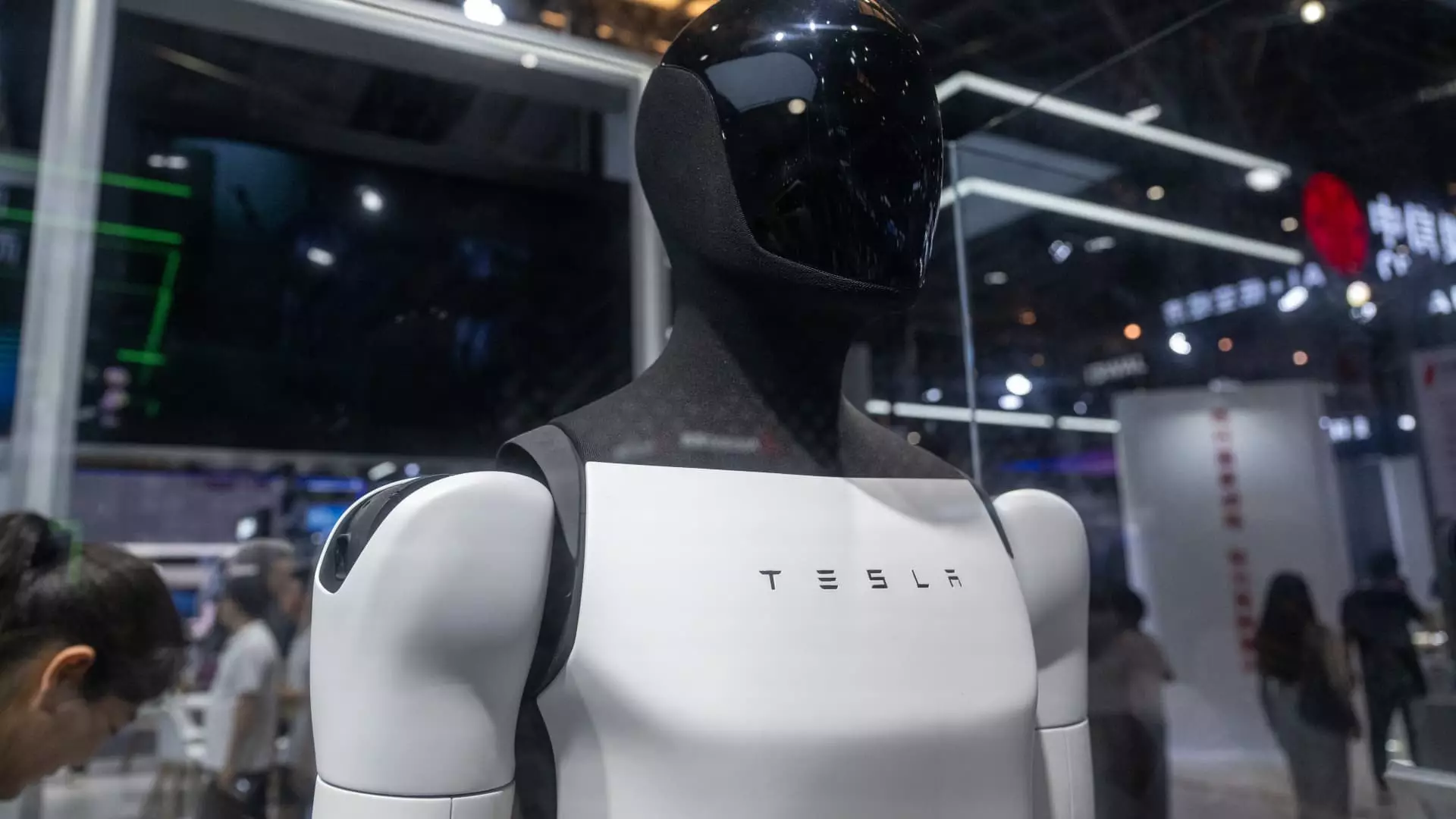In a landscape where technology frequently collides with geopolitical tensions, Tesla’s recent struggle against China’s trade restrictions illuminates the intricate dance between innovation and bureaucracy. Elon Musk, the audacious CEO of Tesla, candidly expressed his concerns during the company’s latest earnings call. He noted that newly imposed export controls on rare earth magnets by China have thrown a wrench into Tesla’s plans for its ambitious Optimus humanoid robot. Musk’s frank admission not only highlights the immediate challenges but also underscores an essential truth: the path of innovation is rarely devoid of obstacles.
This new layer of complexity arises from China’s decision to enforce export licenses on seven critical rare earth elements. With Tesla’s foothold in the market heavily reliant on these materials, Musk’s proactive approach to collaborating with the Chinese government becomes crucial. The need for assurances that these vital resources wouldn’t be diverted for military use further complicates the matter. In Musk’s words, these magnets are intended purely for nurturing the next generation of humanoid robots, an assertion that speaks volumes about Tesla’s vision yet raises questions about transparency and strategic alliances in a rapidly evolving world.
Tesla’s Robotic Roadmap
While the external pressures bear down, the internal vision of Tesla stands resolute. Elon Musk painted an illustrative picture of a future where humanoid robots play a pivotal role in the company’s framework. His unwavering belief in the Optimus robots as vital to Tesla’s long-term success is more than a mere prediction; it’s an essential cornerstone of the company’s aspirations in sustainable technology. Despite the scrutiny from analysts and the looming threat posed by potential global shortages, Musk’s assertion that Tesla aims to produce thousands of these robots shows a committed drive towards ushering in an era of advanced robotics.
The suggestion that Tesla could deploy these robots within its electric vehicle (EV) factories also speaks to the organizational foresight. Integrating humanoid robots into manufacturing processes promises not only to enhance operational efficiency but to redefine what productivity looks like in the automotive sector. However, such an ambitious strategy hinges on the fragile balance of obtaining essential resources, making the stakes incredibly high.
Competition in a Dynamic Market
Compounding Tesla’s hurdles is the fierce competition emerging from China itself. Companies like Unitree Robotics and AgiBot are gearing up to make substantial inroads into the humanoid robotics market, further intensifying the race. These players could leverage China’s domestic capabilities and support systems, gaining advantages that may leave Tesla scrambling to keep pace. This scenario creates an exhilarating yet daunting reality for Tesla, where maintaining a competitive edge requires not just superior technology but also strategic agility.
Musk’s recent comments about finding a new growth engine echo the sentiments of industry experts like Steve Westly, signaling a critical juncture for Tesla. The expectation that Tesla must quickly pivot and innovate speaks to broader concerns within the EV sector, where fluctuating stock values and increasing competition have introduced a sense of urgency. As new players emerge in the robotics field, Tesla’s ambition, fortified by technological investment, will need to continuously demonstrate its differentiation in an increasingly crowded marketplace.
Investor Sentiment and Broader Implications
Musk’s optimism amid mounting pressures stands in contrast to the cautious sentiment permeating the market. With Tesla’s stock reflecting a downturn of nearly 37% year-to-date, the worry is palpable. Yet, the allure of humanoid robots stimulates a sense of hope for investors yearning for a beacon of forward-thinking innovation within Tesla’s offerings. The intertwinement of technological advancement and economic hurdles evokes a narrative rich with potential but fraught with precariousness.
As these developments unfold, the overarching question looms large: how will Tesla navigate the often-turbulent waters of global trade while preserving its pioneering spirit? The outcomes of its negotiations with China hold profound implications not only for the company but also for the future of robotics and the broader EV domain. This path of uncertainty serves as a reminder—innovation thrives not just in the anticipation of success but also in the resilience developed through overcoming adversity.

